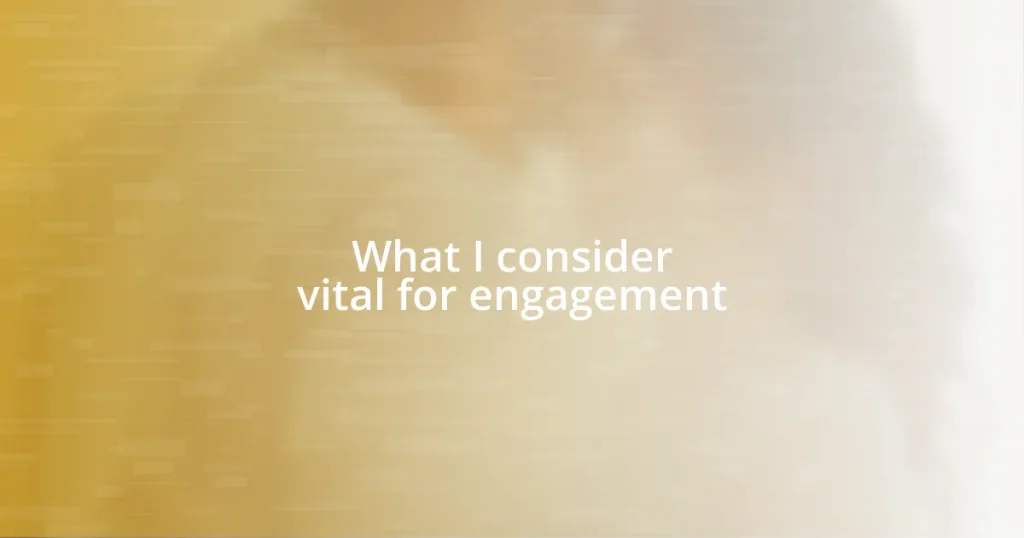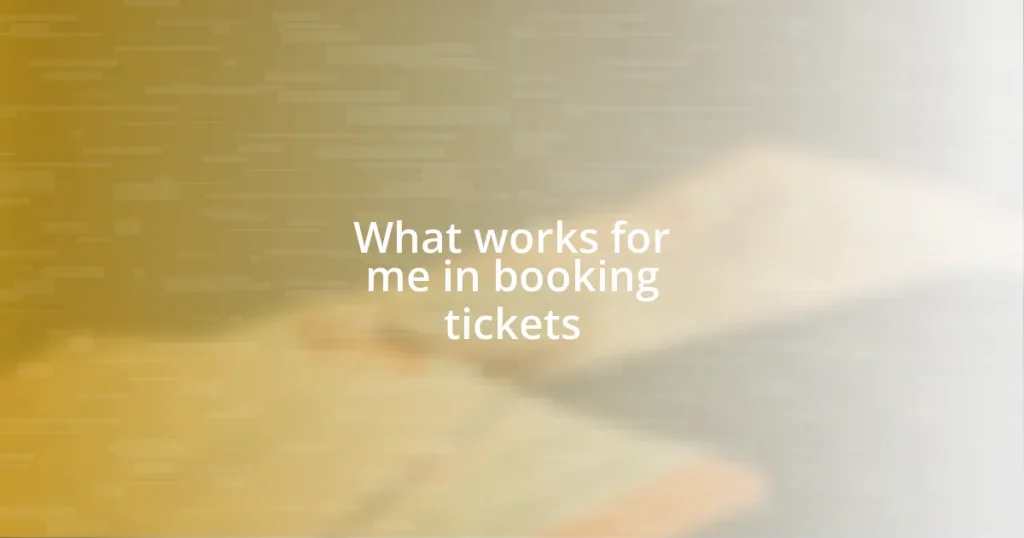Key takeaways:
- Engagement fosters connections, enhances creativity, and influences positive outcomes in both individual and group settings.
- Key elements of engagement include clear purpose, open communication, recognition, inclusivity, and opportunities for growth.
- Building emotional connections through shared experiences, vulnerability, and authenticity strengthens group dynamics and trust.
- Measuring engagement success involves analyzing data, gathering qualitative feedback, and tracking conversion rates to understand audience impact.
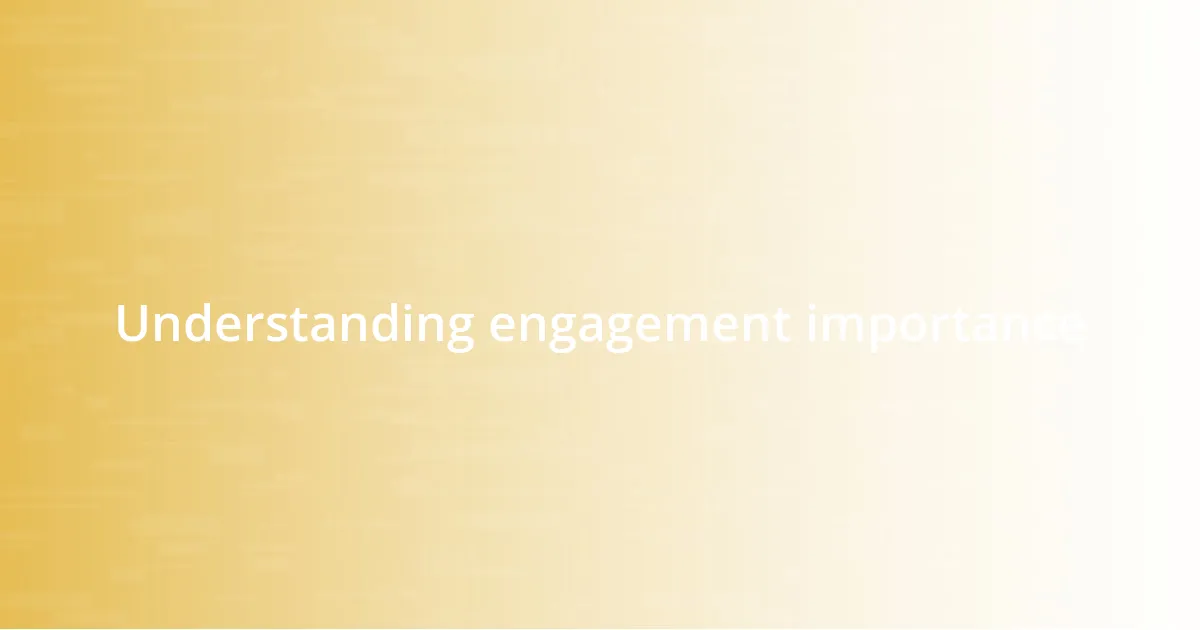
Understanding engagement importance
Engagement is crucial because it goes beyond mere participation; it fosters a connection. I remember a time when I hosted a workshop and noticed how participation transformed the atmosphere. The more attendees engaged, the more vibrant and exciting the discussions became. Isn’t it fascinating how a simple interaction can spark creativity and collaboration?
When I think about the importance of engagement, it becomes clear that it directly influences outcomes. For instance, I once worked on a team project where members were not only involved but truly invested in the process. The result? A higher-quality deliverable and a sense of camaraderie that turned a mundane task into a memorable experience. Have you ever noticed how much more motivated you feel when you’re genuinely engaged in something?
In my experience, understanding engagement is about recognizing its impact on both individuals and groups. Engagement breeds enthusiasm and innovation, creating a culture where ideas flourish. Isn’t it fulfilling to be part of an environment where everyone feels they have a voice? That sense of belonging can turn any effort into a shared journey, enhancing both personal growth and collective success.
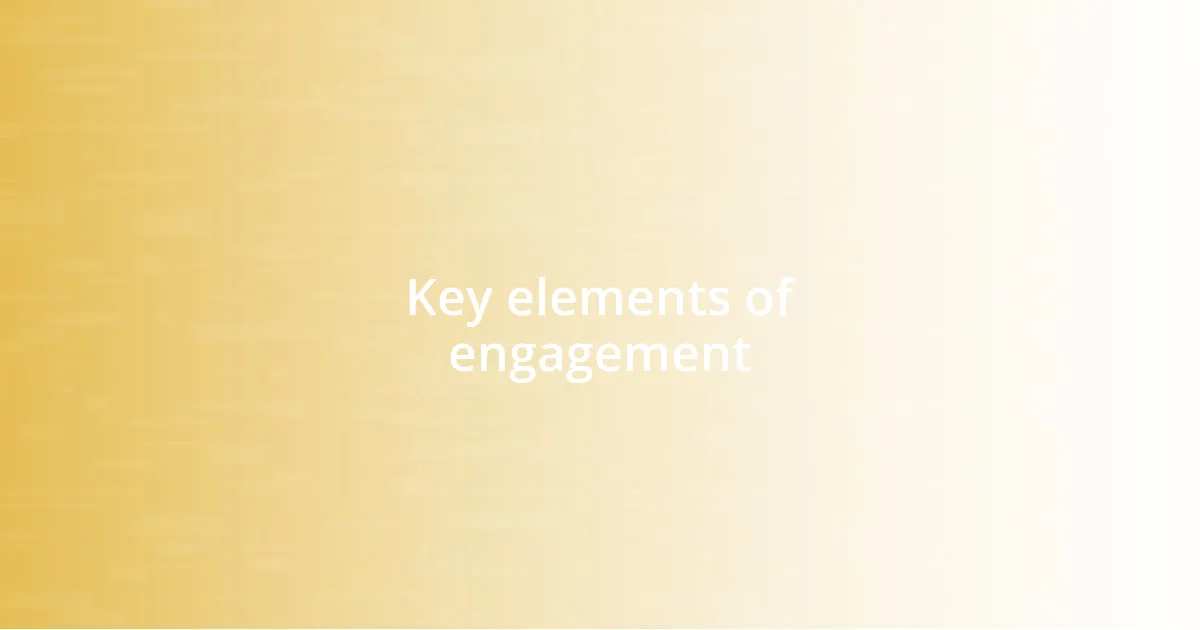
Key elements of engagement
Engagement hinges on several key elements that can transform a passive experience into an active and fulfilling one. One crucial aspect I’ve witnessed is the power of feedback. In a volunteer project I participated in, regular check-ins allowed everyone to voice their thoughts and feel heard. This simple practice created a deeper commitment among the team members—no one wanted to let the others down.
Here’s a list of key elements that I believe are vital for fostering engagement:
- Clear Purpose: Understanding the ‘why’ behind an initiative stirs motivation.
- Open Communication: Creating channels for dialogue encourages trust and collaboration.
- Recognition: Acknowledging individual contributions fuels enthusiasm and reinforces commitment.
- Inclusivity: Engaging diverse voices leads to richer ideas and solutions.
- Opportunities for Growth: When people see chances to develop skills, they’re more likely to invest themselves in the process.
Reflecting on my experiences, each of these elements plays a pivotal role in ensuring that engagement isn’t just a buzzword, but a powerful reality.
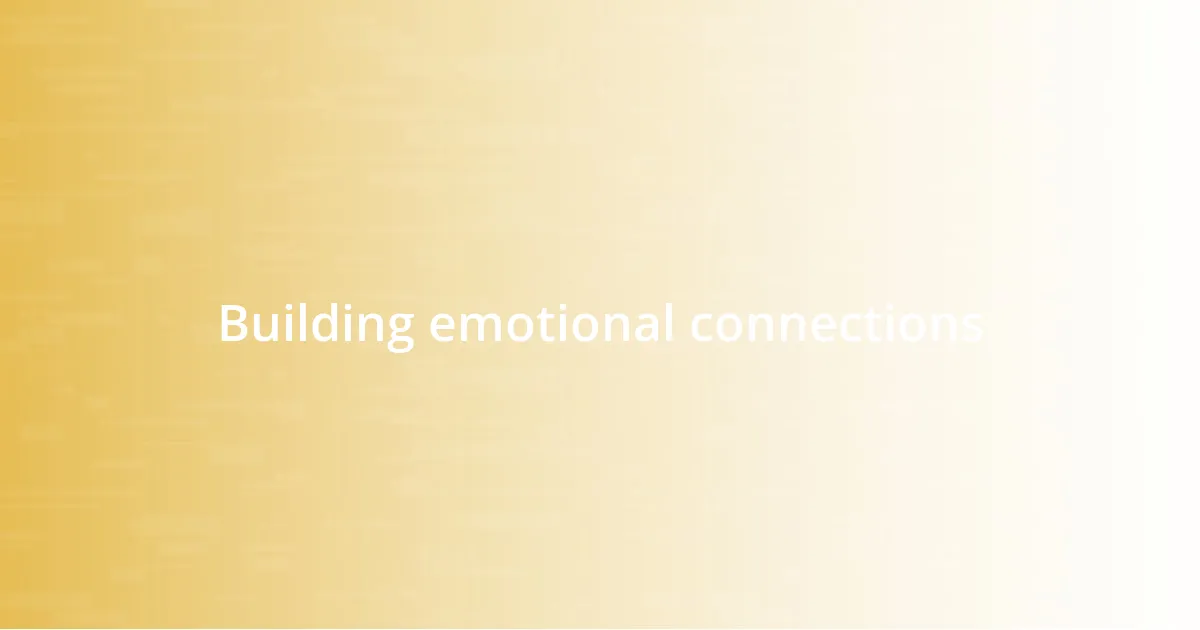
Building emotional connections
Building emotional connections is at the heart of meaningful engagement. I recall a particularly touching moment from a community event where we shared personal stories. As I listened to others, I noticed how their experiences resonated with my own, creating an unspoken bond among us. This emotional connection transformed the atmosphere—suddenly, we weren’t just strangers; we were companions on a shared journey, and that sense of unity made the event unforgettable.
I’ve also observed how vulnerability can enhance engagement. During a team brainstorming session, I chose to openly discuss my fears about an upcoming project. Surprisingly, this prompted others to share their apprehensions, too. The outcome? We ended up building a support system that not only fostered creativity but also deepened our relationships. Isn’t it interesting how sharing personal feelings can enhance collaboration and trust among colleagues?
One crucial takeaway from my experience is to prioritize authenticity in our interactions. When I reflect on engaging with others, I find that being genuine often encourages them to drop their guards. In one instance, during a casual meeting with my colleagues, sharing a personal setback led to a heartfelt discussion on resilience. This openness not only lightened the mood but also encouraged a spirit of understanding and empathy. Isn’t it remarkable how emotional connections can transform not just group dynamics but also individual experiences?
| Aspects of Emotional Connection | Description & Personal Insight |
|---|---|
| Shared Experiences | Creating memories together fosters deep emotional bonds. I’ve seen firsthand how laughing or overcoming challenges as a group can strengthen relationships. |
| Vulnerability | Being open about fears or concerns enhances trust. I found that when I shared my uncertainties, my team felt more comfortable doing the same, leading to stronger collaboration. |
| Authenticity | Genuine interactions encourage others to be real. My experience tells me that authenticity can shift the dynamics of a conversation, paving the way for meaningful dialogue. |
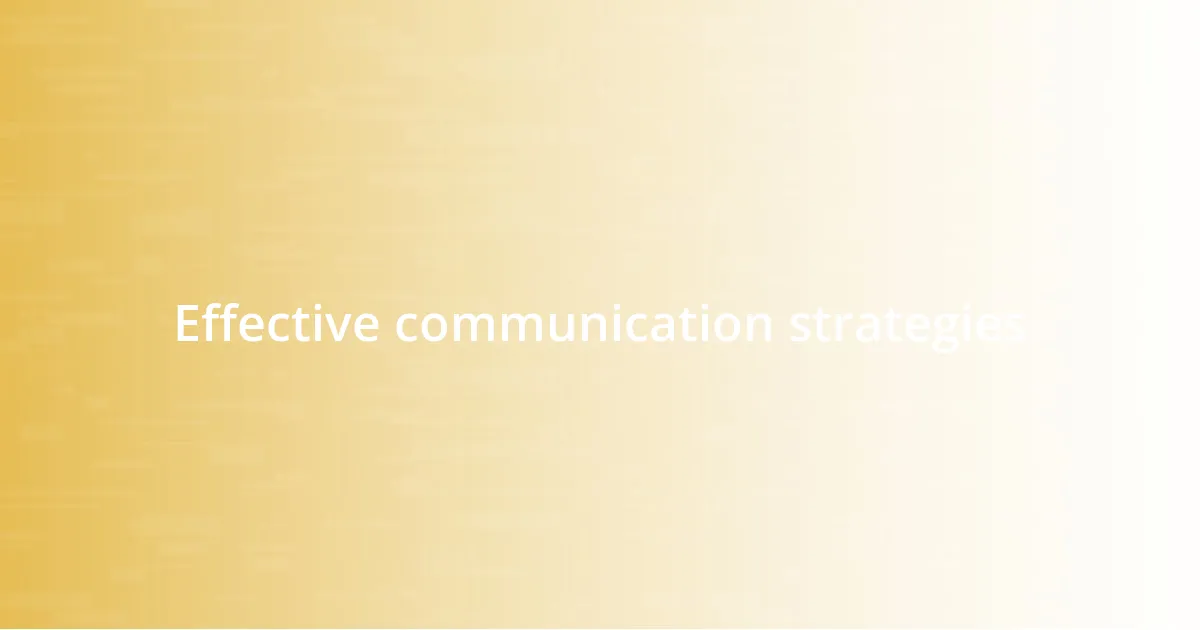
Effective communication strategies
Effective communication strategies can truly reshape our engagement experiences. During a project I once spearheaded, we established a regular feedback loop where each team member could share their insights weekly. I found that this openness not only improved our progress but also forged a stronger connection among us. Everyone felt valued, as though their voice mattered, and it transformed the team’s dynamics into something truly collaborative.
One effective method I’ve employed is the art of storytelling. In a workshop, I noticed how sharing relatable anecdotes made complex ideas more digestible. For instance, when I recounted a challenging situation I faced and how I overcame it, I saw the nods of understanding and empathy from my audience. This connection, sparked by a personal story, created an atmosphere where everyone felt encouraged to share their own experiences. Isn’t it amazing how a simple narrative can bridge gaps and enhance understanding?
Additionally, adapting my communication style has proven essential in different contexts. I vividly remember a moment during a presentation where I shifted from formal jargon to a casual tone. The difference was palpable; the audience became more engaged, nodding along and even asking questions. It reinforced my belief that effective communication is not one-size-fits-all. I wonder, how often do we miss opportunities to connect simply because we stick to a rigid approach? Tailoring communication to suit the audience not only enhances engagement but fosters a sense of belonging.
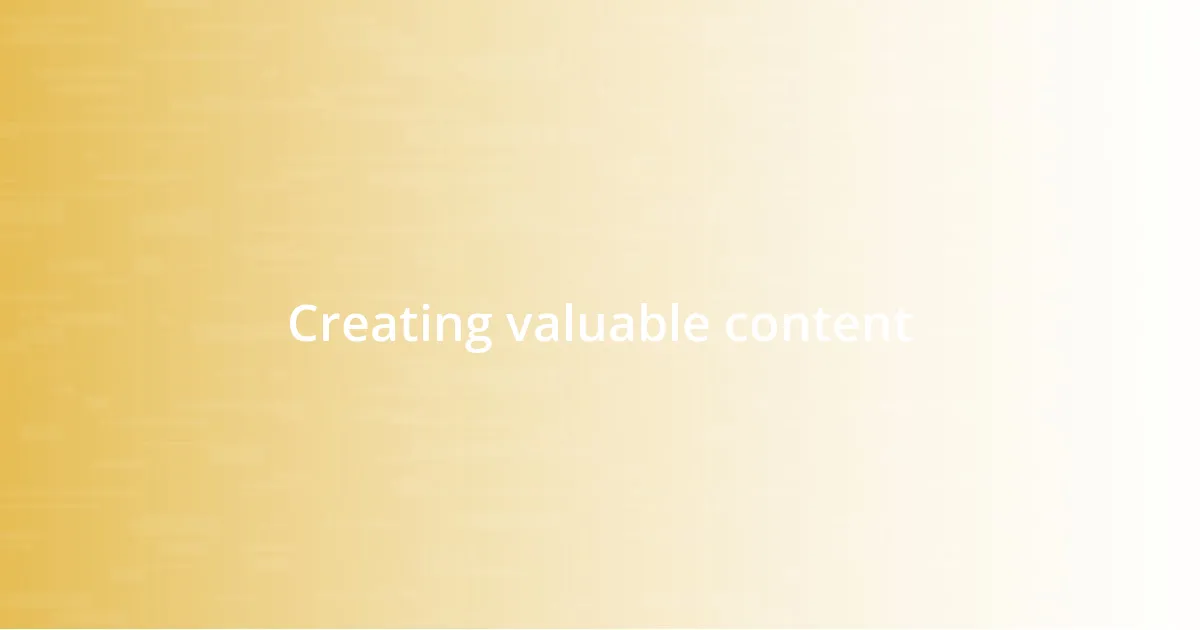
Creating valuable content
Creating valuable content is about understanding what your audience truly needs and desires. I remember crafting a blog post that delved deep into a topic I was passionate about—mental health awareness. Instead of just listing statistics, I shared my own struggles with anxiety and how certain strategies helped me cope. The response was overwhelming; people reached out, sharing their stories and thanking me for my honesty. This experience reinforced my belief that when we create content that resonates personally, it not only informs but also inspires connection.
It’s essential to ask yourself: What questions do my readers have? During one project, I opened a survey to gather insights on what topics my audience was curious about. The results surprised me; they wanted more practical tips rather than theoretical discussions. By addressing their needs directly, I was able to tailor my content to provide real value. Isn’t it fascinating how simple inquiries can significantly enhance the quality and relevance of what we share?
Engagement often comes from actionable takeaways. I vividly remember a webinar where, rather than just presenting information, I included a live demonstration of a technique I had found beneficial. The chat was buzzing with questions and excitement as attendees tried it out in real-time. This not only made the content memorable but also empowered participants to take immediate action. Imagine if every piece of content could spark such enthusiasm—what a powerful way to create lasting engagement!
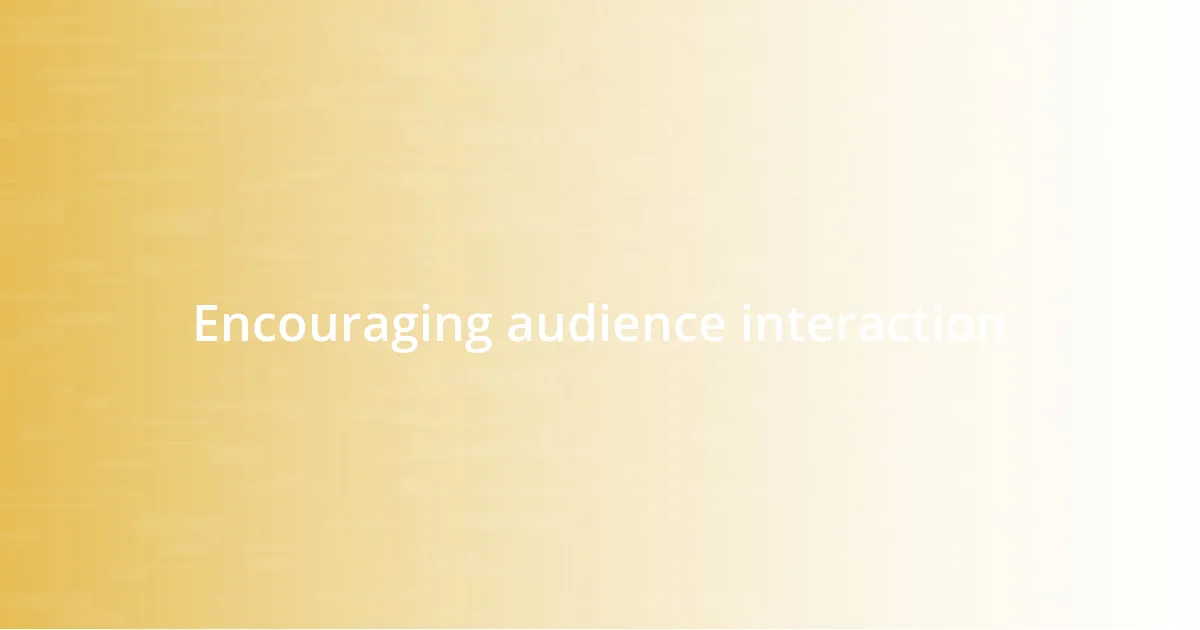
Encouraging audience interaction
Encouraging audience interaction can be transformative. One time, during a small workshop I facilitated, I decided to try something different: I opened the floor for a Q&A session right after my introduction. It was remarkable to see how eager the participants were to share their thoughts. They engaged not just with me but with each other, creating a vibrant discussion that surpassed my expectations. Have you ever experienced a moment where the audience took the lead in a conversation? It’s powerful to witness.
Another approach I found effective is incorporating polls or interactive elements into presentations. I remember using a quick poll during a virtual meeting to assess prior knowledge on a topic. The results were surprising—some insights I had taken for granted were not as familiar to the group as I thought. This instantly shifted my focus and allowed me to address specific areas of interest. The realization that direct involvement can reshape the direction of a discussion is something I now cherish in every presentation. Don’t you think real-time feedback makes discussions feel more alive?
Additionally, fostering an inviting atmosphere encourages vulnerability. I recall leading a session where, after sharing my mistakes and lessons learned, several participants opened up about their own challenges. That shared trust created a supportive space where everyone felt comfortable voicing their thoughts. It was a humbling experience, reminding me that genuine interaction stems from authenticity and vulnerability. Isn’t it interesting how a single moment of openness can ignite a wave of connection?
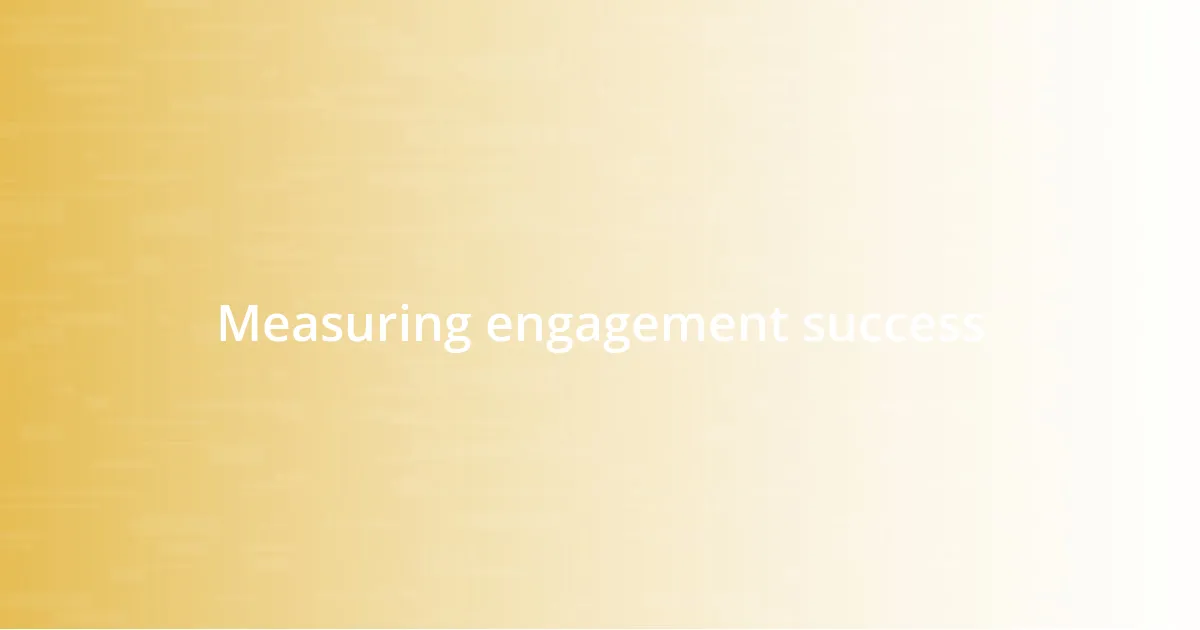
Measuring engagement success
Measuring engagement success is about digging into the data to uncover trends and patterns. I remember analyzing the metrics from a recent campaign and was pleasantly surprised to see a spike in comments and shares. It was a moment of realization for me—engagement isn’t just about numbers; it’s about understanding what resonates with your audience. Have you ever taken a moment to really look at your analytics? It’s eye-opening.
I often find that qualitative feedback can be just as revealing as quantitative data. After one of my newsletters, I received an email from a subscriber who described how one resource I shared had transformed her daily routine. This kind of feedback highlights the impact of your content beyond mere metrics and helps you calibrate your strategy. Isn’t it curious how one person’s experience can shed light on the broader audience’s needs?
Lastly, I believe conversion rates should also be a vital part of measuring engagement. While likes and shares feel great, seeing people take action—like signing up for a webinar or downloading a resource—proves your content is making a real difference. Once, I saw a direct correlation between a deeply personal blog post I wrote and a significant uptick in webinar sign-ups. It showed me that heartfelt storytelling can indeed lead to action. Isn’t it encouraging to see how engagement can translate into tangible results?










